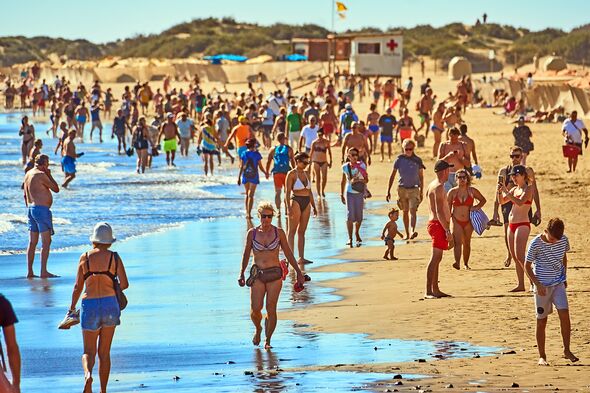The Canary Islands has long been a top holiday destination, with their volcanic landscapes and black beaches, year-round sunshine, historic towns and festivals.
According to Euronews, in 2023, the Canary Islands were the most popular geographical area in the EU, with 83.2 million nights spent by foreign tourists alongside the Balearics.
This year, the archipelago is poised to close with unprecedented tourism figures, increasing the number of people visiting and spending.
This surge has contributed to a staggering tourism spending total of nearly 22 billion euros, or £18 billion.
This will not be welcome news to those who participated in the many over-tourism protests that have plagued the islands since April, arguing that locals are being priced out of the housing market. The arrival of so many visitors depletes limited natural resources and damages the environment.
According to a report by the Gran Canarias Chamber of Commerce and the Excelcan alliance, the archipelago will welcome over 17.7 million visitors this year, a notable increase from the 16 million in 2023.
Of the total visitors, 11 million were international tourists, while over 1.5 million were domestic travellers from within Spain. The year is expected to close with 100 million overnight stays, underscoring the Canary Islands’ popularity.
Tourism now accounts for a growing share of the Canary Islands’ GDP, which is estimated at 52 billion euros, or £43 billion. This economic boom highlights the sector’s importance to the archipelago.
Despite the record-breaking growth, the industry faces a persistent challenge: a shortage of qualified workers.
José Miguel González, director of the report prepared by the consultancy Corporación Cinco, noted that the tourism sector could easily absorb up to 70,000 new workers if they could find them. This is a pressing issue in a region where the unemployment rate remains at 14%.
Santiago de Armas, president of Excelcan, attributed the sector’s success to several factors, including a robust winter season that has solidified the Canaries as a year-round destination and market diversification to appeal to different demographics and regions.
Increased flight routes have also made the archipelago more accessible than ever.
However, de Armas cautioned about potential challenges in the summer of 2025, including geopolitical uncertainties that may affect tourism trends.
Tourism spending in the Canary Islands reached 5.16 billion euros in Q3 of 2024, a 23.8% increase from the previous quarter. While this growth demonstrates the region’s strong appeal, experts emphasise the need for a shift toward high-value, sustainable tourism.
In October, at least 8,000 people took part in simultaneous demonstrations on Sunday in Gran Canaria, Tenerife, La Palma, Fuerteventura, Lanzarote, and El Hierro, calling for a change in the tourism model for the Spanish islands under the slogan “Canary Islands has a limit.”
In Playa de las Americas in Tenerife, a resort popular with British holidaymakers, protesters appeared on the beach while tourists were sunbathing and chanted, “This beach is ours.”
The Canary Islands regional government drafted a law that is expected to pass this year to toughen the rules on short-let properties following complaints from locals priced out of the housing market. Newly built properties will be barred from the short-let market, and property owners with a permit will have five years to comply with requirements that include granting neighbours the right to object to these permits.
